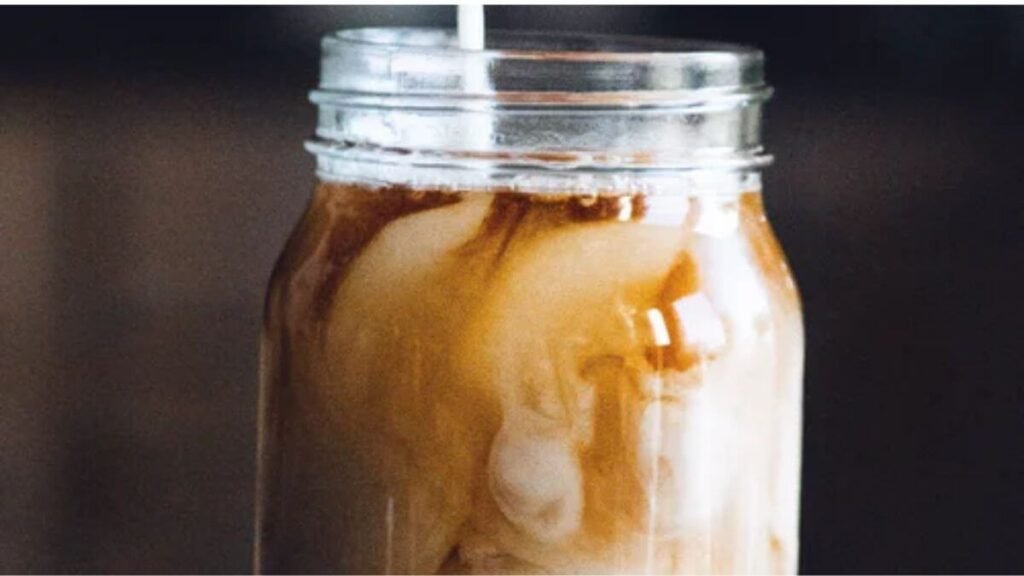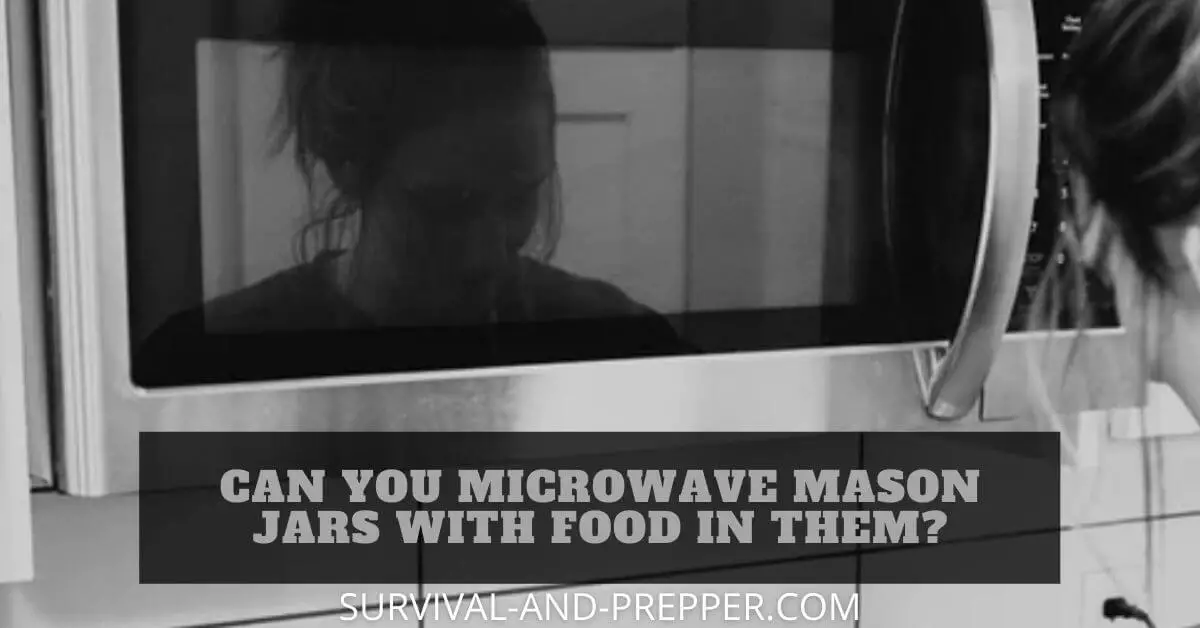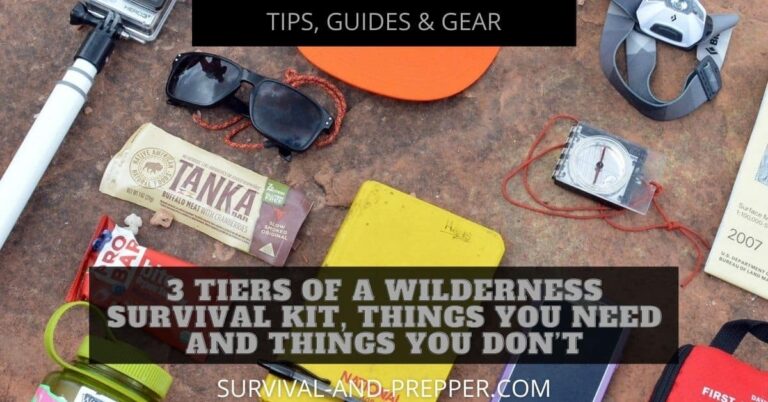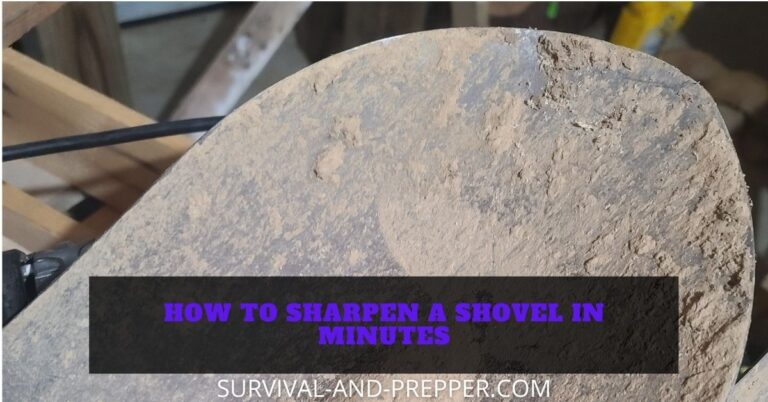Can You Microwave Mason Jars with Food in Them?
It is safe to microwave most modern glass jars. Brands such as Ball,Kerr and Jerdan often include microwave-safe symbols on their products. However, the lids and rings contain metal and should not be put in a microwave. Glass jars can become very hot, creating a burn risk if left in the microwave for long periods.
Why Would You Microwave a Mason Jar
If you frequently use mason jars for everything in the kitchen like we do then you already know they can store almost anything in when canning and even make great drinking glasses.
One thing you might find yourself wondering is can you microwave mason jars safely.
As I pointed out above it is safe to microwave most modern glass jars as many different brands make a microwave safe product.
There are a few things to keep in mind though when deciding to microwave a mason jar. Let’s look at a few of those now.
Microwave Safe Labeling on the Jars
Some older jars are made from a slightly different blend of glass or use a different process in their manufacturing process. This could result in these jars being unsafe to microwave.
The easiest way to confirm it is safe to microwave your jars is to examine the bottom of the jar. Most of your modern brands such as Ball, Kerr and Jerdan will most likely list a clear microwave safe symbol in that location.
If this symbol is missing from your jars, then it is best to err on the side of caution and avoid microwaving the jar.
Temperature and Heat Exchange of Mason Jars
Without getting to technical glass certain types of glass can heat up very quickly in a microwave. Most microwave safe glass will allow the microwaves to pass through and remain cool to the touch. While some impure glass may heat up from the microwave radiation.
Where heat becomes an issue with microwave safe jars is when food or liquids are stored inside of the jars. As the microwaves heat the food or liquid, this heat begins to warm the glass.
Due to the insulating nature of glass the jars will then hold this heat and can result in burns if you are not careful when removing the jars and their contents from the microwave.
Remember it is not the glass that was heated but the food that became hot and then heated the glass.
This is also seen when you attempt to heat mason jars in an oven.
Dangers of the Glass Jar Shattering When Microwaved
In most cases you do not have to worry about microwave safe glass shattering while inside of the microwave. However, there are two times when you should use extra caution.
Frozen foods inside of a mason jar could cause the glass to break when the food begins to thaw and contracts or expands inside of the glass. This could result in the glass cracking due to the fact that glass is not very flexible.
The other time involves once the food and jar have been microwaved. It is almost certain that the material inside of the glass mason jar would have transferred some of its heat into the jar itself resulting in hot glass.
If you keep your kitchen area around 70 degrees or colder and were to set the hot jar down directly on a marble, granite or ceramic countertop that is also this temperature you could end up with a shattered jar.
This shattering is caused by the sudden cooling of the portion of glass touching the cold surface while the rest of the jar remained hot. This is an extreme case but it is possible. Try and always set hot glass on either another dish or a pot holder to keep it separated from colder surfaces.
They Are Not Wedding Rings, Make Sure to Remove Them and the Lids
There are two main reasons that you should remove both the rings and lids to your jars prior to microwaving them. The first has to do with the reactive nature of metal when exposed to microwave radiation.
Placing some metal objects, potentially rings and lids included, inside of a microwave is usually a bad idea. The microwave radiation can reflect off of the metal surfaces and result in a very violent sparking inside of the microwave.
This could lead to burns and damage to the microwave not to mention the possibility of starting an electrical fire.
Though some people have indicated that they safely placed metal inside of their microwave. Having seen the effects of accidentally microwaving aluminum foil on several occasions I prefer not to risk this.
The second reason you should avoid placing jars that are still sealed inside of the microwave has to deal with the expansion of the contents when they begin to heat.
As temperatures in nearly every substance change they can increase in volume or decrease slightly depending on numerous factors. This change in volume can rupture the relatively brittle and ungiving glass of a mason jar.
However, this can be avoided simply by allowing the contents to thaw if frozen, and removing the lids prior to placing the jars into the microwave.
How Can I Tell If My Glass Is Microwave Safe If It Does Not Have a Label?
While you should generally err on the side of caution and avoid microwaving a material you are not certain is microwave safe, you can perform this simple check to help determine if it is safe to place the item in the microwave.
CBS7 had a short explanation on this topic which allows you to “test” the dish to see if it is microwave safe.
Their microwave safe test consists of the following steps:
- Set microwave to max power
- Set a cup of water inside of the microwave
- Add the jar in question to the microwave
- Set the time to 1 minute
- Carefully check the dish in question for heat after the time is complete.
By setting the microwave to max power and placing a cup of water in the microwave you have “set up your experiment.” The cup of water is necessary to ensure that the microwave radiation has a substance to react with. The water will heat up during the process.
When you examine the jar after the one minute heating process you want to check its temperature carefully. If it is warmer than the water or hot, then it is not microwave safe. If it is cool to the touch then it is relatively safe to use that jar in the microwave.
Final Thoughts
With some care most mason jars can be microwaved in relative safety. Keep in mind that you should first thaw any frozen foods and remove the lids.
Being able to microwave them is yet one more reason that mason jars are excellent additions to your kitchens. Now to heat up my coffee.

While you are here make sure and check out some of our other canning related articles including topics such as Why Do Mason Jar Lids Rust?, Hot Pack Canning vs Cold Pack Canning and How Hot Can Mason Jars Get?






